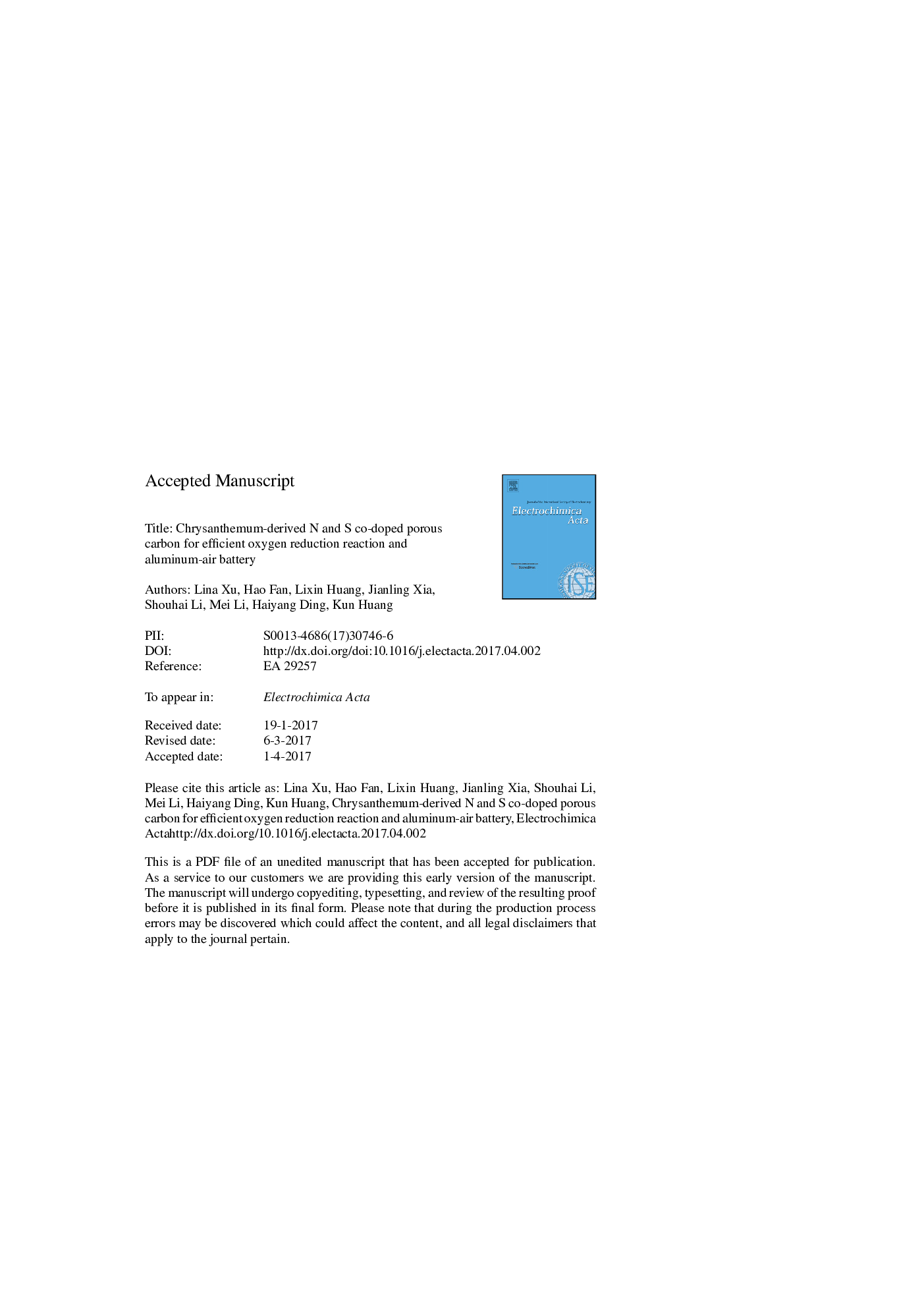| Article ID | Journal | Published Year | Pages | File Type |
|---|---|---|---|---|
| 4767088 | Electrochimica Acta | 2017 | 32 Pages |
Abstract
Implementation of cheap and efficient electrocatalysts towards oxygen reduction reaction (ORR) falls in the central focus on fulfilling cost-affordable and high-performance fuel cells and metal-air batteries. In this study, N and S dual-doped porous carbon was prepared by a facile strategy for using tribute chrysanthemum as precursor and zinc chloride as activating agent. The catalyst prepared at 800 °C (NSC800) depicts multiscale porous with large specific surface area (810 m2 gâ1) and abundant exposed intrinsic dopants. The electrochemical characterizations exhibit that its onset potential is 0.0966 V versus Hg/HgO electrode, much higher than that of the other reported N, S co-doped carbons, and it also shows the better methanol tolerance, carbon monoxide (CO) poisoning and stability than commercial Pt/C. Consequently, NSC800 catalyst shows attractive properties when used as the air cathode of a home-made primary aluminum-air battery, e.g., an open-circuit potential of ca. 1.64 V, a discharge specific capacity of 288 mAh gâ1, and a peak power density of 46 mW cmâ2. Such attractive performances could be mainly attributed to the synergistic effect of exposed intrinsic N and S active sites and increased specific surface area with multiscale porous. Our idea on developing such doped carbons by utilizing extensive intrinsic components of biomass would be a promising strategy to cathode electrocatalyst for fuel cells and metal-air batteries.
Related Topics
Physical Sciences and Engineering
Chemical Engineering
Chemical Engineering (General)
Authors
Lina Xu, Hao Fan, Lixin Huang, Jianling Xia, Shouhai Li, Mei Li, Haiyang Ding, Kun Huang,
